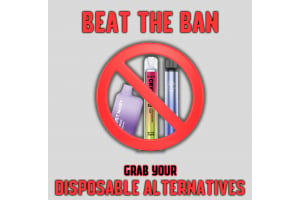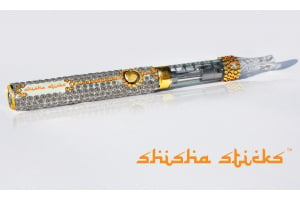E-cigarette ingredients revealed – you may be surprised what we discovered
There has been a huge amount of debate in recent years around the question of whether vaping is safe. So we thought we’d take a deeper look into what goes into the e-liquid that electronic cigarettes use, and we think you may be surprised by what we found.
Of course there’s no doubt in anyone’s minds that vaping is safer than smoking. E-liquid, the vapour-making substance that comes in refills for e-cigarettes, contains a controlled amount of nicotine. And, because e-liquid comes in a variety of nicotine strengths, the vaper can choose their most appropriate level to start off with, then slowly lower the concentrations until they are left smoking just the delightfully flavoured nicotine-free e-liquid.
Did you know that almost every flavour of e-liquid that we sell comes in a nicotine-free version, so that once you have weaned yourself off the toxins that keep you addicted to smoking you can carry on vaping by choice if you wish.
The number of vapers seems to be almost doubling each year, from 700,000 in 2012 to 1.3 million in 2013 and 2.1 million in 2014, so it is only responsible to go further than simply saying that vaping is safer than smoking and actually investigate what goes into this magic liquid.
So here they are – the main ingredients in e-liquid, and the reason why we suggest that its four ingredients are far better than the 4,000 toxins you’ll find in cigarettes.
Ingredient #1: The Base
All e-liquids start with a liquid base and this is made from either propylene glycol (PG) or vegetable glycerine (VG), though occasionally both are used. Now these may sound scarily chemical, but when you consider that PG is used in foods, health and beauty products, and even some baby products, and VG is an all-natural base it becomes less so.
The base is colourless and odourless and has been approved as generally recognised as safe, or ‘GRAS’ as their acronym puts it, by the FDA in America, for inclusion in foods and consumables.
Ingredient #2: The Nicotine
E-cigarettes are, in essence, a substitute for patches and other aids for helping those who are looking for an effective way to quit smoking. They are aimed at smokers who wish to kick their expensive and toxic habit. And, therefore, most e-liquids have to contain nicotine.
The unique thing about e-liquids is that they come in varied and measured strengths, so you find your comfort zone and wean yourself slowly off nicotine. Everything else stays the same – the smoking action, the feel of a something cigarette-like in your hands, the sight of smoke-like vapour rising from your breath – it’s the nicotine strength that you can control. This makes it all the more easy to put the toxins behind you.
Ingredient #3: Distilled Water
Some manufacturers add a little distilled water to dilute the strength of the nicotine in the e-liquid. Distilled water is just water that has gone through the process of distilling (boiled to a vapour then cooled and its condensing steam collected) to remove many of its impurities.
Ingredient #4: The Flavour
The final ingredient is the fun one – flavour. Whether you still want to smell of smoke (with a tobacco flavour), are in the mood for something indulgent (chocolate flavour), or are feeling fruity (a variety of fruity flavours are available), we have hundreds of flavours to select from. All of them, aside from the tobacco flavour, come in a nicotine-free variety. So once you have reduced your dependence level to zero you can choose to continue vaping with your favourite flavour.
Although many scientific bodies are reserving judgement until longer studies have taken place, ingesting these few ingredients instead of the huge host of toxins in every single cigarette is obviously worth considering as a cheaper, cleaner way to live a longer healthier life.
















